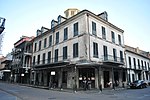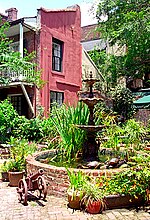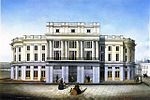St. Louis Hotel

The St. Louis Hotel was built in 1838 at the corner of St. Louis and Chartres Street in New Orleans, Louisiana, United States. Originally it was referred to as the City Exchange Hotel. Along with the St. Charles Hotel, the St. Louis has been described as the place where the history of New Orleans happened. The St. Louis "flourished at high tide" until the American Civil War, served as the de facto Louisiana state capital during Reconstruction, and then fell into a long slow decline until it was demolished around 1914. The St. Louis Hotel is mostly remembered today for the slave sales that took place under the building's rotunda on an almost daily basis for over 20 years. A hotel exists in the same place today but with a different name, the Omni Royal Orleans.
Excerpt from the Wikipedia article St. Louis Hotel (License: CC BY-SA 3.0, Authors, Images).St. Louis Hotel
Royal Street, New Orleans French Quarter
Geographical coordinates (GPS) Address Nearby Places Show on map
Geographical coordinates (GPS)
| Latitude | Longitude |
|---|---|
| N 29.956 ° | E -90.066 ° |
Address
New Courts Building (Louisiana Supreme Court Building;The Louisiana Supreme Court)
Royal Street 400
70130 New Orleans, French Quarter
Louisiana, United States
Open on Google Maps











